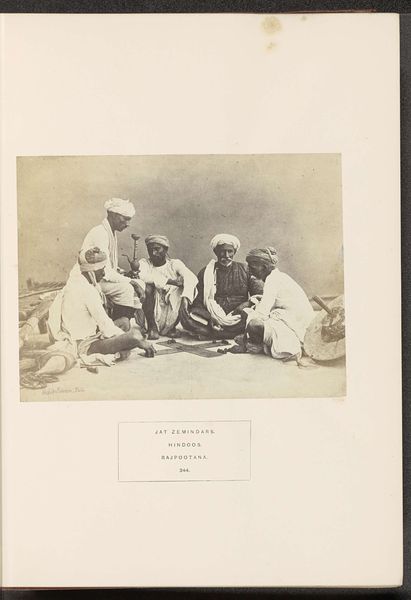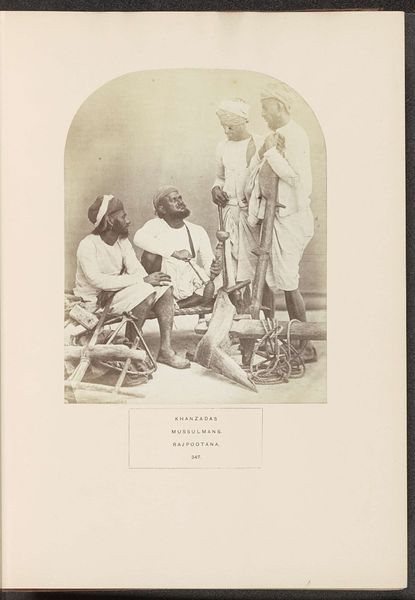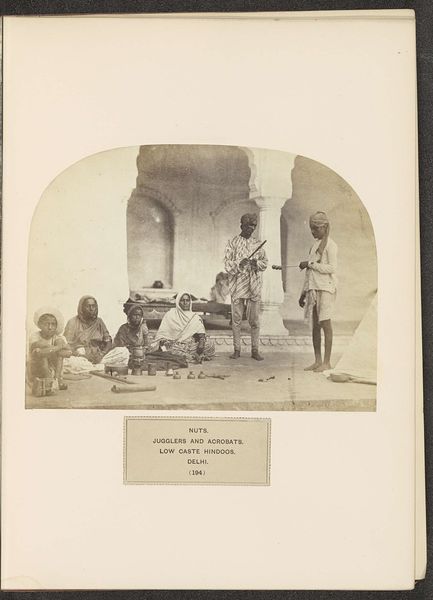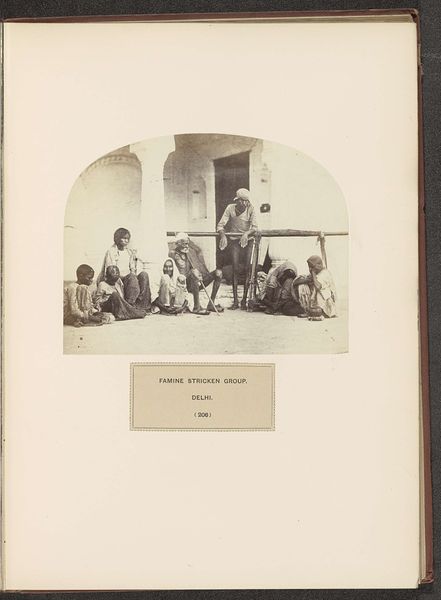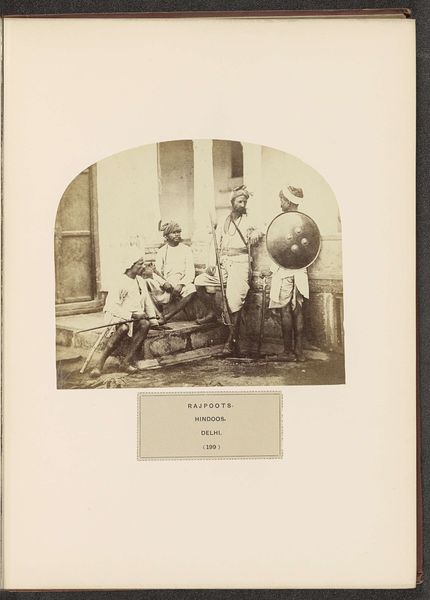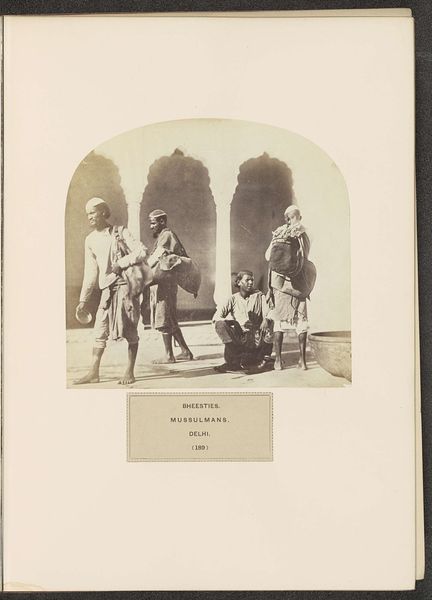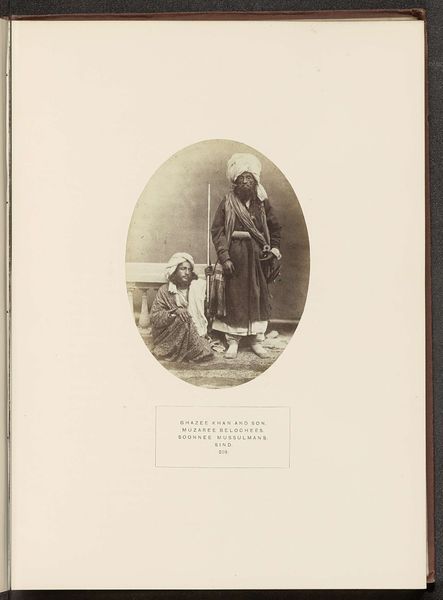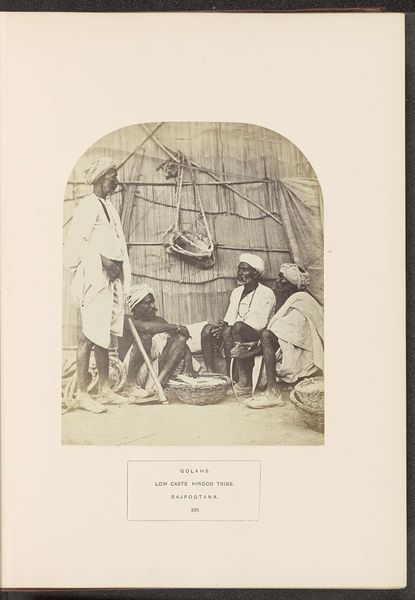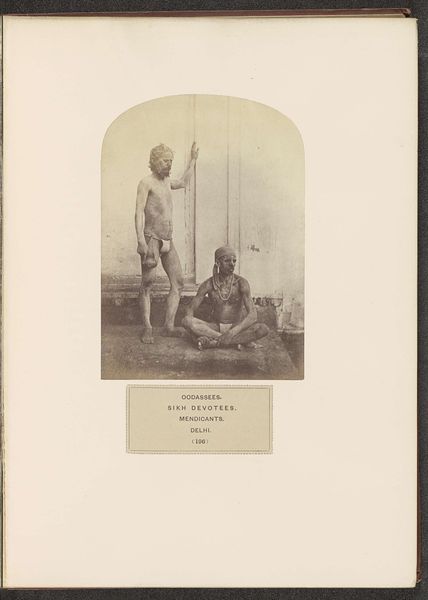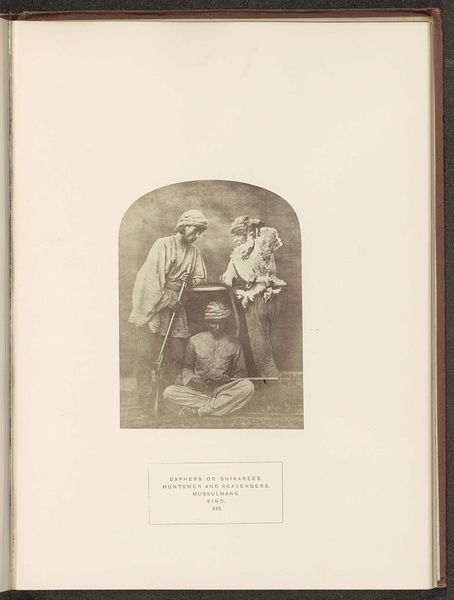
photography
#
portrait
#
photography
#
orientalism
Dimensions: height 172 mm, width 165 mm
Copyright: Rijks Museum: Open Domain
Editor: This is a photograph titled "Portret van drie Bairagis in ceremoniële kleding in Delhi," created before 1869 by Shepherd & Robertson. I find the image fascinating because of how posed and formal the subjects appear, yet their expressions are quite individual. What stands out to you, considering its historical and cultural context? Curator: Immediately, I am struck by the deliberate visual language deployed here. Notice the careful arrangement of the figures. The seated figures act as mediating presences, anchoring the composition. And look at the gaze; the standing figure confronts the viewer directly. It's a common trope: he's a holy man with knowledge and awareness. And these items suggest self-control, or ritual discipline. What purpose might such symbols serve for the Bairagis and for those who observed this photograph? Editor: So, are you saying that the symbols worn hold specific meaning connected to the faith, even for us today? Curator: Absolutely. These objects, such as the beads, markings on their foreheads, and their clothing are laden with meaning – often signifiers of devotion, renunciation, or adherence to specific tenets of their spiritual path. To the Bairagis themselves, the symbols serve as constant reminders of their vows and their connection to the divine. Editor: This makes me consider how cultural context enriches how art is interpreted, especially across centuries. Curator: Indeed. As interpreters, we seek to understand those intended meanings and layers of association. The dialogue across time helps enrich cultural understanding. Editor: Understanding their symbolism enhances my view of the art’s purpose, transforming a historical image into a lesson about devotion and memory. Curator: Precisely. Through symbolic forms and their evolving resonance, we discover both history and continuity.
Comments
No comments
Be the first to comment and join the conversation on the ultimate creative platform.
